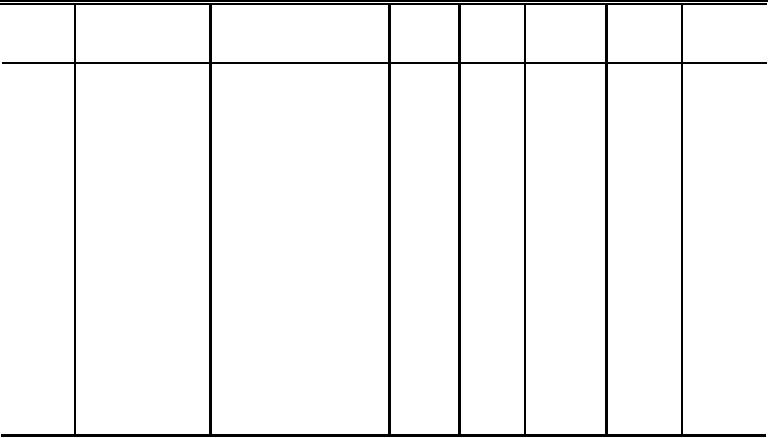
Helium, argon, or mixtures of the two are
economical welds with less heat effect on the
suitable for GMA welding of aluminum. At any
workpiece.
given current, the helium shielded arc has a higher
voltage than the argon arc. A smoother, more
Dual Action of the Arc
stable arc is obtained with argon. Pure argon is
used most widely on aluminum plate less than
The reverse polarity arc supplies heat to melt
three-fourths inch thick. Combinations of argon
the consumable filler wire and the workpiece. The
and helium are often employed for welding heavy
arc also breaks up the surface oxide on the
plate. This combination is used particularly for
aluminum. This cleaning action is due to the
out-of-position welding to obtain the "hotter arc"
electrical characteristics of the DCRP arc. Arc
characteristics of helium with the stabilizing effects
action is not intermittent as in ac GTA welding, but
of argon. Mixtures of 75 percent helium and 25
is continuous because there is no change in current
percent argon are commercially available. Other gas
direction using dc GMA welding.
mixtures, for example, 60 percent helium and 40
percent argon, are mixed by combining flows from
Shielding Gas
separate tanks of helium and argon. Helium
additions of over 10 percent markedly change the
The GMA welding gun deposits molten
arc characteristics.
aluminum where directed on the workpiece. The
gas shields the arc and weld pool while the filler
The flow of gas necessary for good quality GMA
wire is being melted and transferred in spray or
welding depends upon the gas used, welding current,
droplet form to the pool. Another purpose of the
diameter of gun nozzle, joint design, welding
gas shield is to provide a more easily ionized path
position, speed of welding, and freedom from draft
than air.
Table 10-9.--Recommended Practices for GMA Welding of Aluminum Alloys
Argon (2)
Filler
Current
Material
Joint Degree (1)
No. of
Amps
Wire Dia.
Gas Flow
Welding Position
Arc
Thickness
Passes
Inches
CFH
DC
Voltage
Inches
30
1
110-130
20
3/64
Flat
None
l/8
100-120
30
1
Horiz. & Vert.
None
20
3/64
40
Overhead
None
100-120
20
1
3/64
200-225
40
1
Flat
None or Single Bevel
l/l6
26-28
l/4
170-190
26-28
l/16
45
2 or 3
Horiz. & Vert.
Single Bevel
50
2 or 3
180-200
26-28
l/16
Overhead
Single Bevel
230-300
50
1 ot 2
Flat
Single or Double Bevel
l/l6
26-28
3/8
Horiz. & Vert.
Single or Double Bevel
180-225
26-28
l/16
50
3
5
Overhead
Single or Double Bevel
200-230
26-28
l/16
50
2 or 3
Single or Double Bevel
280-320
26-30
3/32
50
Flat
l/2
Single or Double Bevel
210-250
26-30
l/16
50
3 or 4
Horiz. & Vert.
Overhead
Single or Double Bevel
225-275
26-30
l/16
80
8 to 10
Single or Double Bevel
320-375
3132
60
4 to 5
1
Flat
26-30
4 to 6
Horiz. & Vert.
Single or Double Bevel
225-275
26-30
l/16
60
Overhead
Single or Double Bevel
225-275
26-30
l/l6
80
15 or more
(3)
2
60
350-425
12 or more
Single or Double Bevel
Flat
26-30
3/32
(3)
3
60
350-450
20 or more
Flat
26-30
3/32
Single or Double Bevel
(l)
See exercises for Joint Designs.
(2)
Gas flows for helium are slightly higher than for argon. Lower flows are possible as mentioned in Part I-Basic Theory.
(3)
Preheat optional.
10-40

